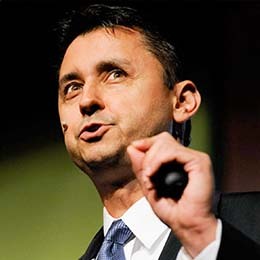There is No Such Thing as Good Results Without Trust

In a low-trust culture, results cost more and take longer.
The relationship between trust and results is a two-way street. When trust is high, solid results often follow. Conversely, when trust is weak, it’s almost impossible to produce superior results.
We see this acutely in the fraught debate about working from home. Countless employees have the perception that they must go back to the office because they are not trusted to maintain high productivity. Leaders who are concerned about what is being done during work hours and are responsible for organizational culture want to closely monitor employees.
Even if managers have good data on how productivity at their organization increases when employees are in the same setting, the perception is that the real reason to bring people back to the workplace is a lack of trust. That lack of trust can become a downward spiral. The threat of doing your job—or face consequences—means many employees will only do exactly what is asked of them and nothing more. In an environment where trust is in low supply, there is no such thing as extra effort.
The impact on results is obvious. Indeed, this is one of the most obvious “trust taxes” that exist, as well as a few others we’ll outline later in this article. Without trust, there is diminished inspiration, innovation, or boost to productivity—all essential components of success.
This is especially pertinent in an era where many employees have free will to write anonymously about their companies online. I saw a comment recently about a company saying that if rival organizations were looking to hire great talent, consider poaching employees from this company because the culture was so toxic, and people were more than ready to jump ship for better environments.
Naturally, an exodus of some of an organization’s best people is going to take a toll on results. Leaders don’t merely need to focus on keeping top talent. When possible, they benefit most from the compounding effect of retaining their top performers as long as possible. In a high-trust workplace, this continuity pays dividends in ways that can be almost impossible to overstate.
Likewise, the cost of replacing high performers is not just the loss of those team members, since a company losing talented people is sending a negative signal to the marketplace. It is also the loss of institutional knowledge.
All of this speaks to the necessity of inspiration. A high-trust culture inspires people. It’s the formula that ultimately attracts, retains, and engages the best employees—and brings out the best in people—to win in the workplace. An organizational culture that enjoys deep loyalty is typically one that deeply inspires employees on its team.
The core principle of results is about achieving outcomes and delivering on your promises. Yet it is not only about producing results; it is about consistently achieving what you said you would—doing it with excellence. When leaders and colleagues see that you are someone who consistently delivers high-quality products or services, they are more likely to trust you. Results, of course, cannot be produced in a vacuum, or achieved at any cost. Results must be propelled by high character and ethics.
The Most Trusted Leadership Company
Learn how your organization can use our people, content, and technology to create collective action and meaningful change.

Achieving superior results at scale and with appropriate speed requires a high level of internal trust. In a high-trust environment, employees are more willing to collaborate and share information. They work together more effectively, pooling their knowledge and skills to eliminate scattered approaches and solve problems and achieve common goals, knowing that credit will be shared appropriately.
This collaborative environment enables creativity. By fostering a harmonious environment where creativity thrives, employees feel valued, and emotionally intelligent leaders ignite collective goal achievement and innovation.
When employees believe that their organization values their contributions and has their best interest in mind, they are more likely to invest their time and energy in achieving the stated goals. Pete Beaudrault, the former CEO of Hard Rock Cafe International and of Sbarro, put it this way: “The price of freedom is performance.”
When a team member delivers solid results, that performance is deservedly rewarded with opportunities, alternatives, and choices that are not provided any other way. The stronger the performance, the greater the flexibility. Essential to the goal of delivering superior results is the extent to which expectations are defined explicitly up front. This is vital if results are to be delivered consistently, on time, and within budget—the keys to building trust.
In a low-trust culture, flexibility is an afterthought. Command and control is the preferred form of management. A lack of trust increases the number of rules and regulations. Compliance becomes a bandage to cover up for the lack of trust.
In a low-trust culture, results cost more and take longer. There is far less of a chance of outperformance because the workforce is uninspired. Worse still, those results are likely to be far less compelling than the ones achieved in a high-trust culture.
Ultimately, people choose to volunteer their best efforts. And there is a nearly overlapping correlation between those best efforts and whether they come from trust in the people meant to lead them. If they do not feel like a valued member of a winning team—doing meaningful work in an environment of trust—leaders can expect any achievement to come at a greater cost, ceding ground in a competitive marketplace.
When trust is abundant, results and productivity can rise in tandem. If a leader hasn’t set clear goals and expectations, their team might be working really hard, but that’s not the same thing as productivity. The goal is not to work hard, but to make progress toward specific goals aligned with your organization’s mission.
If you don’t become intentional about your time and set boundaries, you and your organization will always be at the mercy of the urgencies of others—and those urgencies will end up diminishing you and your team’s productivity.
When goals and measures are clear, leaders don’t need to monitor or control people to know whether they’re getting things done. They can simply follow up on objectives and performance indicators regularly to gauge progress. Individuals can also initiate conversations about prioritization and take ownership of their own effectiveness, empowering them to organize their work in more productive ways.
This article was made possible by contributions from FranklinCovey Vice President of Content Development and Senior Leadership Consultant Kory Kogon.








